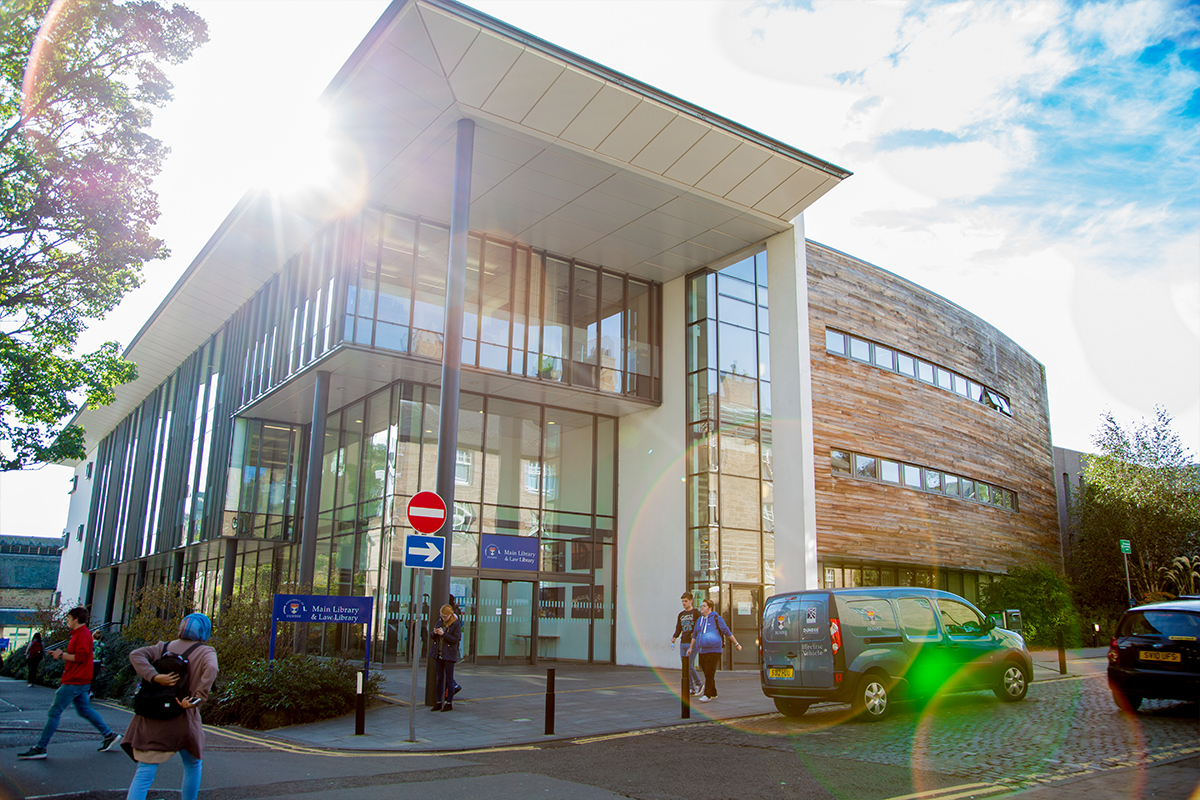Nikki Doig is a lecturer at the University of Dundee in Scotland, supporting undergraduate education students working towards the IBEC Certificate in Teaching and Learning. She shares her perspective on coordinating a virtual practicum with the International School of Como and incorporating practices from online teaching into the classroom.

To learn more about the impact that the COVID-19 (Coronavirus) pandemic is having on education, we connected with educators, student-teachers and schools. You can find more perspectives from this series here.
How has remote learning and conducting an online practicum challenged you?
Nikki Doig: Every year at the University of Dundee, our second-year IB pathway student-teachers engage in a six-week placement in IB World Schools all over the globe. This year, COVID-19 (Coronavirus) put an abrupt end to placement for them all. Our students literally had their bags packed (some had even started their journeys), as countries around the world began closing their schools. It was surreal. A couple of our students did make it to Melbourne, even managing to spend one day in school, before the university recalled all students and staff working internationally.
So, the physical practicum was cancelled. However, a few frantic emails later and the International School of Como (ISC) opened their virtual doors to us. ISC has been one of our partner schools since the introduction of an IB pathway in our Master of Education programme five years ago, and they are huge supporters of our students, whom they refer to as, ‘Team Dundee’. Of our 16 second-year IB pathway student-teachers, 13 took part in the virtual practicum. Three student-teachers were unable to due to personal commitments, and they undertook a literature-based study instead.
I worked with Jane Whittle, ISC’s head of primary and Primary Years Programme (PYP) coordinator, to ensure that our students had the opportunity for sufficient depth of learning to make continued progress with the IB pathway outcomes without overloading ISC pupils and staff, who were themselves navigating unfamiliar online waters. To achieve this, observations focused on two ISC classes (grades three and four) as well as the grade six PYP exhibition preparation. The benefits of remote learning meant that, if required, all 13 student-teachers could observe a single lesson―something that simply could not happen in the non-virtual world. Being able to observe together had learning benefits as well as logistical ones. In face-to-face practicums, our student-teachers are allocated their own placement classes however, the shared observations made possible through the virtual practicum encouraged rich discussion as student-teachers collectively analysed their reflections each week online.
“Observing the strategies ISC teachers used to engage their pupils online has been a fantastic learning opportunity in terms of the students’ own communication skills”.
Safeguarding was an important consideration―both for our teaching students and their pupils. The platform ISC use for virtual school is Zoom and our students always accessed this through the school’s link, never by setting up their own meetings. Prior to the practicum starting, we revisited all the considerations around confidentiality and professionalism in preparation for any placement, ensuring this discussion also encompassed appropriate behavior and expectations online.
With the introduction of lockdown in the UK, many of our students were balancing their studies with personal and work commitments. Over the four-week period, the weekly class timetables were shared via Google Forms, giving them the flexibility to identify which lessons they would be engaging with that week in a way that fit around their other responsibilities. This encouraged agency, as student-teachers could also tailor their experiences to their individual learning needs and interests. Student-teachers observed a series of lessons to develop their understanding of continuity and progression, mentored the PYP exhibition, provided pupil support and led learning online. IS Como encouraged our students’ participation in staff meetings and collaborative planning sessions, which further developed their understanding of IB policy and practice.
How do you plan to implement the outcomes of virtual learning into your standard curriculum?
Arrangements for this virtual opportunity evolved fairly rapidly and our students responded with great flexibility, willingness and a commitment to their ongoing education. During tutorials and in the student teachers’ final written reflections, the positive impact of this experience is apparent, despite initial apprehension from some about engaging with an unfamiliar school via an unfamiliar platform. It will be interesting to investigate how we might harness virtual observation opportunities moving forward, post COVID-19, to enhance the student experience and further support our students in developing their critical understanding of the practice.
“I am interested in investigating what opportunities we can develop that might support shared observations online”.
One of the many benefits has been the opportunity for our students to teach and reflect together. As there are only two PYP schools in Scotland, securing international placements is essential and means that, while sometimes a number of students may be placed in the same school, others may be the only student in the school. I am interested in investigating what opportunities we can develop that might support shared observations online. It might be that students work more collaboratively in a virtual space with in-person placements in the future to better maintain a sense of connectedness and community.
I am also keen to explore possibilities for our campus-based IB module, which happens prior to placement. Might there be opportunities for remote observation and analysis as a class? Virtual practicum worked because ISC was also fully online. Might a face-to-face lesson be filmed and streamed for student observation? The logistics of this need thought through carefully. How would it be filmed to capture all the nuances of a lesson? What about child and parental consent? Lots to think about, and I’d love to connect with any teacher educators who already incorporate this into their teaching.
How prepared do you think your students are to face in-person instruction after COVID-19?
Despite being pretty much, ‘ground zero’, in Europe with regards to the COVID-19 crisis, we have been blown away by the generosity of ISC in supporting our students. As a result, the student-teachers have been able to continue to develop their knowledge, understanding and pedagogical skills, not only with regards to the IB PYP curriculum but also in terms of how some schools are responding and adapting in the current climate.
Over the virtual practicum, students reflected on the merits of teaching and learning online, and they also analysed some of the challenges. They are very ready and very keen to apply their learning in person next year.
We don’t yet know what the immediate future holds for our schools. I suspect a blended approach will be the way forward for many, at least in the short-term. Through their virtual practicum, the IB students have had a great introduction to online pedagogy, as well as the opportunity to reflect on and problem-solve some of the barriers to engaging pupils in an online space.
The hope is, COVD-19 guidance-dependent, that this cohort will be able to undertake in-person IB placements at the end of their third year. Their virtual practicum has ensured that they will be starting on a much stronger foundation in terms of their understanding of PYP philosophy and pedagogy. Before that happens though, our students will undertake an early years placement in Scottish mainstream primary schools. Observing the strategies ISC teachers used to engage their pupils online has been a fantastic learning opportunity in terms of the students’ own communication skills. This will really support their in-person teaching when working with young learners.
What advice do you have for other teacher educators looking to engage and prepare student teachers for the classroom while teaching virtually?
When teaching virtually, it’s really important to be mindful of student workload. I was initially all about, ‘Watch this!’, ‘Read this!’, as I shared sources and resources online. That can quickly become overwhelming for students, particularly when they are balancing numerous modules and becoming familiar with new online platforms. Remain focused on your key learning outcomes and reflect on how best you might support students in achieving these.
“Flexibility, while often hard to achieve working within rigid university timetables, is key”.
Another consideration is time. Four hours of lectures on campus, with breaks, lunch, a coffee, a short walk in between is very different to four hours of learning online. You can’t replicate what you would do in-person in a virtual space and you shouldn’t be expected to. Consider chunking up your teaching much more than you ordinarily might. For example, a focused 20-minute discussion around an article read or a video watched. Take a five-minute break. 20 minutes of direct teaching. Another break. Final discussion, plenary, next steps…
Speak to your students. Ask them what works for them. Flexibility, while often hard to achieve working within rigid university timetables, is key.
This year our students may have been engaged in a virtual practicum, but it did not feel like they were engaged in, ‘remote learning’. In fact, we connected as a community of learners far more than had their in-person practicums taken place. If there was a question, it was emailed or shared through our Microsoft Teams. If we needed to meet, we met, without the previous restrictions on finding a time and a place. These technologies obviously existed prior to COVID-19 lockdown, but the mass embracing of technology over this period has ensured we remained connected while physically separate. How you teach will very much depend on the platform you use but, whatever that is, try to ensure that communication is central. When people are working in remote spaces and not interacting with others as much as they ordinarily might, connection holds greater significance than ever.

Nikki Doig is a lecturer in education at the University of Dundee in the School of Education and Social Work.
To gain either an IB certificate in teaching and learning or in leadership research, simply enroll in a programme of study at one of our IB-recognized universities.
Interested in learning more about how a Master of Education degree can help shape your career? See how the IB’s collaboration with University of the people can help fund your education and offer valuable professional development here.
If you enjoyed this story, consider reading more below:



